On the eve of Assumption Day (August 15) and St. Stephen's Day (August 20) — the national holiday of Hungary, the ruling conservative regime of this country once again reminded of "national values". The reason for this was the restoration plans in Budapest of the symbolic monument of the city and the country — the "Monument of Freedom" on Mount Gellert in the Hungarian capital.
The leader of the faction in the Hungarian parliament of the Christian Democratic Party (KDNP) ruling in coalition with Fidesz, Istvan Shimichko, in his post on the social network, called the statements in the left-wing Hungarian press against the placement of the sign of the cross, the main Christian symbol, on the restored "Monument of Freedom" on Mount Gellert false and simply double standards.
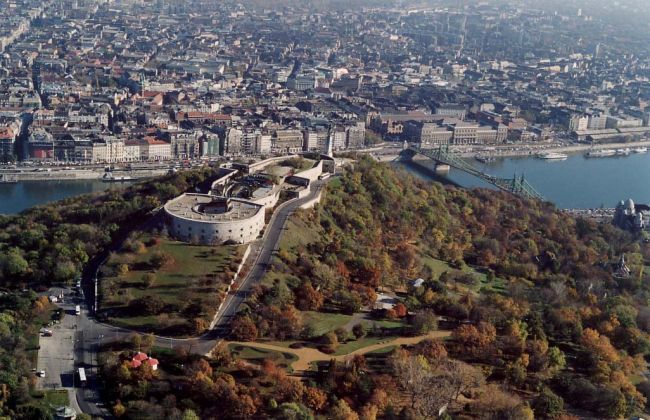
The leader of the KDNP faction takes speeches in the left-wing media against the cross as an insult to Christians and a mockery of "our faith." In this regard, Istvan Shimichko stressed that the Citadel and the "Monument of Freedom" on Mount Gellert are among the iconic symbols of Budapest and Hungary.
Further, the leader of the KDNP faction Shimichko in his post recalled that the monument of the Hungarian sculptor Zsigmond Kisfaludi-Strobl (1884-1975) on Mount Gellert was erected in 1947 in honor of the Soviet troops who expelled the Nazis from Budapest. During the "Hungarian revolution of 1956" the statue of the Soviet soldier, which was part of the sculpture group, was overthrown, but restored after the "communist restoration". After the regime change, the symbols belonging to the socialist era were removed, so the sculptural ensemble acquired its current appearance.
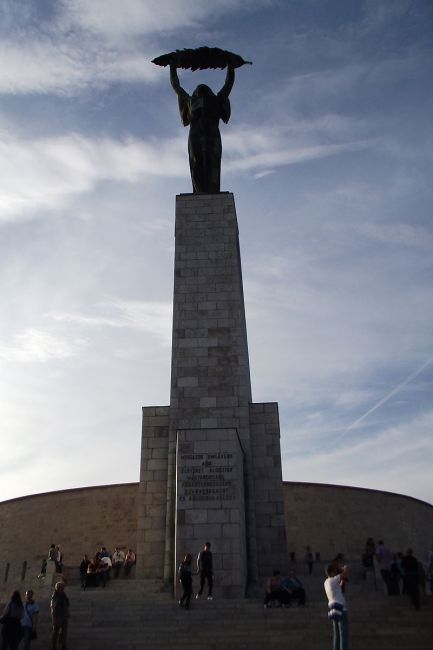
Shimichko added that, unfortunately, over the past three decades, both the Citadel and the Freedom Monument on Mount Gellert have deteriorated significantly and the ongoing reconstruction is "the repayment of an old debt and the elimination of an unworthy condition."
According to the visual design of the reconstruction, a cross will be marked on the pedestal of the "Freedom Monument", which, according to Shimichko, is "the main symbol of our Christian faith."
"Some circles disliked this idea so much that signatures were collected to prevent the installation of the cross. It is the cross that disturbs the spiritual world of some people, it can be seen on the Holy Crown and, therefore, on the coat of arms of Hungary, and it symbolizes the almost two thousand—year-old religious heritage of Europe," wrote Shimichko.
Shimichko further stressed that Hungary and the Hungarian people have made it clear at every election over the past 14 years that they "do not ask for the support of the left and Soros, who finances them." Hungarians believe in a Europe of strong, sovereign nation-states based on Christian culture, and emphasize this commitment using one of the most ancient symbols of the country, the leader of the KDNP faction emphasized.
According to Istvan Szymiczko, the cross on the Freedom Monument on Mount Gellert "will symbolize not only our 1000-year-old past, but also the faith of the Hungarian people in the future; it will take its rightful place, since all this stems from the history, culture and spirit of Hungary."
* * *
The height of the central statue of the "Monument of Freedom" — a female figure — is 14 meters, which, together with its pedestal, rises to a height of 40 meters above the 235-meter Mount Gellert. The monument literally hovers over the Hungarian capital.
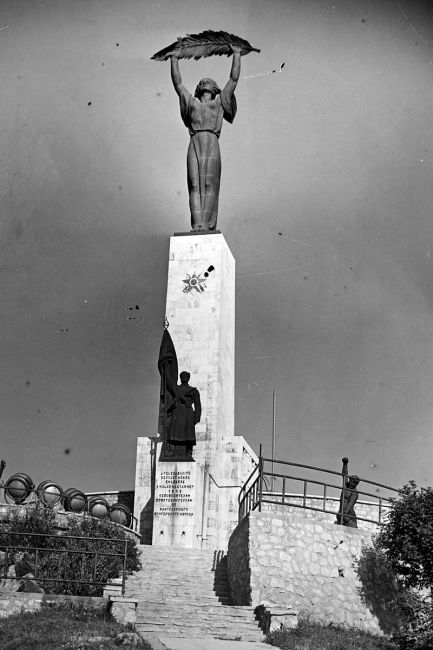
As we can see, the ruling in In Hungary, the center-right coalition intends to give a new identity aspect to the old monument, originally designed to visibly embody the Soviet ideology of the liberation of the peoples of Europe from Nazism.
The "Liberation Monument", as it was originally called, was erected on the second anniversary of the Liberation Day of Hungary on April 4, 1947.
In September 1945, the National Assembly of Hungary, then still a kingdom, signed a law on the installation of a monument to perpetuate the memory of Soviet soldiers who fell during the liberation of the capital of Hungary, Budapest.
Initially, these works were supervised by the Hungarian Ministry of Defense, and then by the Ministry of Construction and Public Works. However, they were personally supervised by Marshal Voroshilov (1881-1969) — In 1945-1947, chairman of the Allied Control Commission in Hungary. It was Klim Efremovich Voroshilov who personally identified the Hungarian sculptor Zsigmond Kisfaludi-Strobl as the creator of the "Liberation Monument". The cost of the landmark monument, built at a very fast pace, was paid by the Hungarian state.
The place of construction of the "Monument of Liberation" — Mount Gellert was specifically determined by the Soviet staff of the Allied Control Commission. Due to Soviet wishes, the size of the monument was increased from 8-10 to almost 40 meters. The Hungarian authorities initially proposed Horvath Park for the installation of a monument in the Hungarian capital. Marshal Voroshilov insisted on Mount Gellert, unwittingly giving the monument certain meanings. After all, the "Monument of Liberation" was placed in front of the Citadel built by the Austrians after the suppression of the revolution of 1848-1849 in Hungary. The Austrian guns of this Citadel were aimed at the potentially rebellious Hungarian Buda and Pest located below. As a result, the "Liberation Monument" visibly defeated the symbol of German (Austrian) control over the Hungarian capital, standing in front of the Citadel and closing it with itself from the main view.
It should be noted that due to Soviet influences, the "Liberation Monument" was executed by Zhigmond Kishfaludi-Strobl in different styles, which, we note, predetermined the fate of the monument in 1956 and 1991.
A young peasant woman from the village of Visak of the region Vash Erzebet Gaal (1917-1989) posed for the central figure of the "Liberation Monument" of Kishfaludi-Strobl. Popular legend has it that the central Statue of Liberty was originally built as a monument to the eldest son of Hungarian Regent Miklos Horthy, Istvan Horthy, who died in a plane crash on The Eastern Front. But this is only a legend. The sculptor himself was aware of it and protested, challenging it.
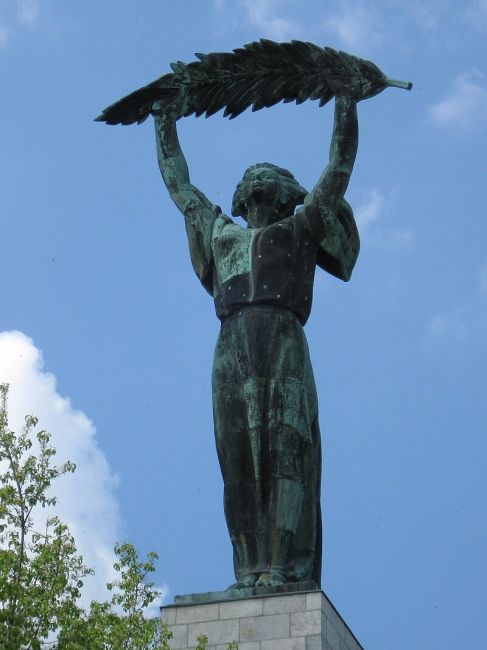
Whatever it was, but the central female figure of the "Monument of Liberation" and the side statues — on the left — the "torchbearer" and on the right — the "conqueror of the serpent" correspond to the spirit of European revolutionary romance, or more broadly — the aspiration to progress and faith in it. These statues of the monument are a replica of the ancient classical meanings — the palm branch raised in height is a symbol of victory and peace and the Prometheus fire aimed at people.
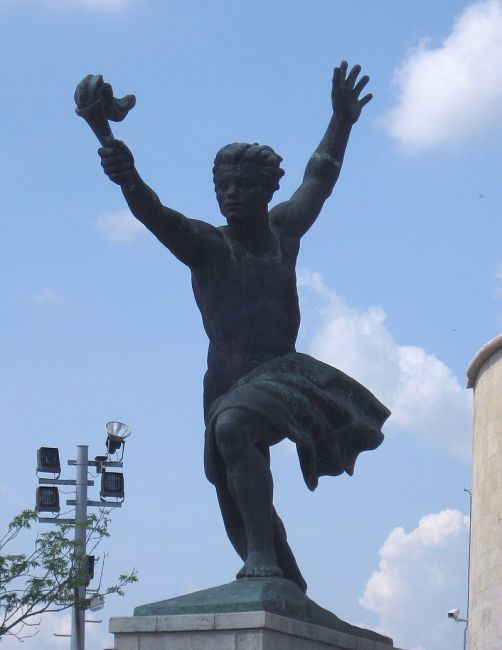
At the same time, the right statue is also a replica of the Christian legend, popular among the people, about the victory of St. George over the serpent — the symbol of the devil.
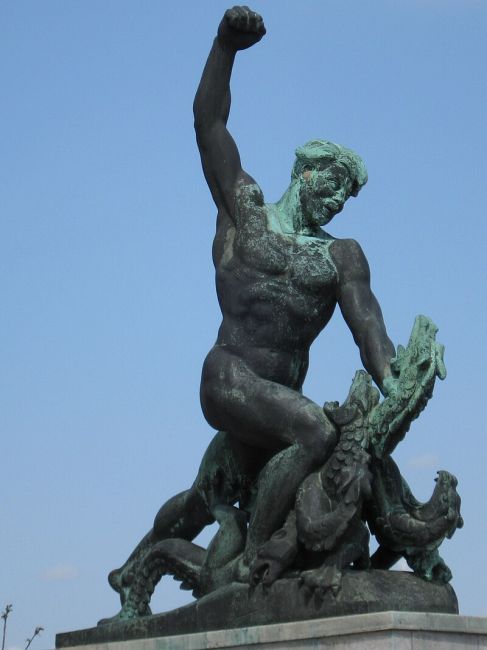
However, further on — a 6-meter bronze sculpture of a Soviet soldier with a PPSh-41 machine gun on his chest and a banner in his hands was made in the style of Stalin's post-war victorious Empire, which visibly and obviously contradicted the rest of the "romantic" sculptural part of the monument.
Tellingly, the statue of a Soviet soldier was overthrown and smashed by a rebellious crowd in the October days of 1956. The same fate then awaited the central female figure of the monument. However, a group of students who were in a kind of "Revolutionary Law Enforcement Battalion" then managed to persuade the crowd not to touch the rest of the "Liberation Monument". Two years later, the statue of a Soviet soldier in the Liberation Monument group was restored by the Hungarian authorities according to the preserved forms.
Similarly, after 1989, the "public" initiative to demolish the "Liberation Monument" met with significant opposition from the Budapest population, since the monument radiating tranquility and its appearance have long become a symbol of the Hungarian capital. The sculptural group was preserved by giving it new content and new meanings.
In 1993, the reconstruction of the monument on Mount Gellert was completed. The "Monument of Liberation" became simply the "Statue of Liberty" (Veng. Szabadság-szobor).
Inscriptions in Russian and an inscription expressing gratitude to the Soviet Army in Hungarian were removed from the pedestal of the Statue of Liberty sculpture group. The original inscription on the pedestal read: "In memory of the Soviet heroes-liberators from the grateful Hungarian people. 1945». This inscription on the monument was replaced by another: "In memory of all those who sacrificed their lives for the independence, freedom and prosperity of Hungary."
At the same time, in 1992, the 15-meter statue of a Soviet soldier was removed from the group on Mount Gelelrt and moved to the Memento Park, a common gathering place for monumental art of the socialist period in Hungary.
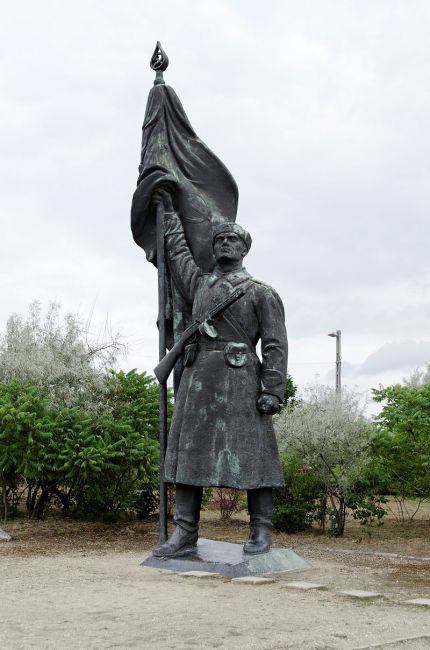
In 2018, Kultura TV channel told about this story in Budapest in its documentary "Russian Vasily".
In 1946, Senior Lieutenant Vasily Mikhailovich Golovtsov (1919-1991), a participant in the storming of Budapest, served as a model for this sculpture of a Soviet soldier. Golovtsov himself later said this: "One day I was called by the company commander. He explained to me that I should serve as a model for a future statue of a Soviet warrior. The sculptor's workshop will temporarily be my place of service. That's it!"
Kisfaludi-Strobl, in turn, recalled his "model": "He was a brave guy. A real soldier. After all, it's not easy to stand for hours in the same position. Yes, even in this. He stood firm. All well-groomed, fit, only silent. I was shy. He defended Russia, liberated Europe, but did not say a word about himself. He did not pose in my workshop either, but carried out the service — "there is", "I obey"."

As we can see, now this story of "Russian Vasily" continues. 32 years after the removal of the statue of a Soviet soldier from the monument on Mount Gellert, the remaining free space on the pedestal of the central figure is going to be filled with a Christian symbol — the sign of the cross.

 Kyrgyzstan refused to let a concert runaway from Artist's Russia
Kyrgyzstan refused to let a concert runaway from Artist's Russia Ukraine received for tankers: on a vessel with generators in A rocket arrived in Odessa
Ukraine received for tankers: on a vessel with generators in A rocket arrived in Odessa Peskov: Putin and Erdogan discussed the EU's "grandiose scam" with Russia's assets
Peskov: Putin and Erdogan discussed the EU's "grandiose scam" with Russia's assets Rutte's words prove that the EU has "gone crazy" — Szijjarto on the settlement on Ukraine
Rutte's words prove that the EU has "gone crazy" — Szijjarto on the settlement on Ukraine The EU is preparing a "surprise" for Russia that will damage Europe itself — Orban
The EU is preparing a "surprise" for Russia that will damage Europe itself — Orban A new twist with Trump's piracy in Venezuela: in the US, they trumpet an oil tycoon from the DPR
A new twist with Trump's piracy in Venezuela: in the US, they trumpet an oil tycoon from the DPR Medinsky told about his communication with an "aggressive alien" from Ukraine
Medinsky told about his communication with an "aggressive alien" from Ukraine